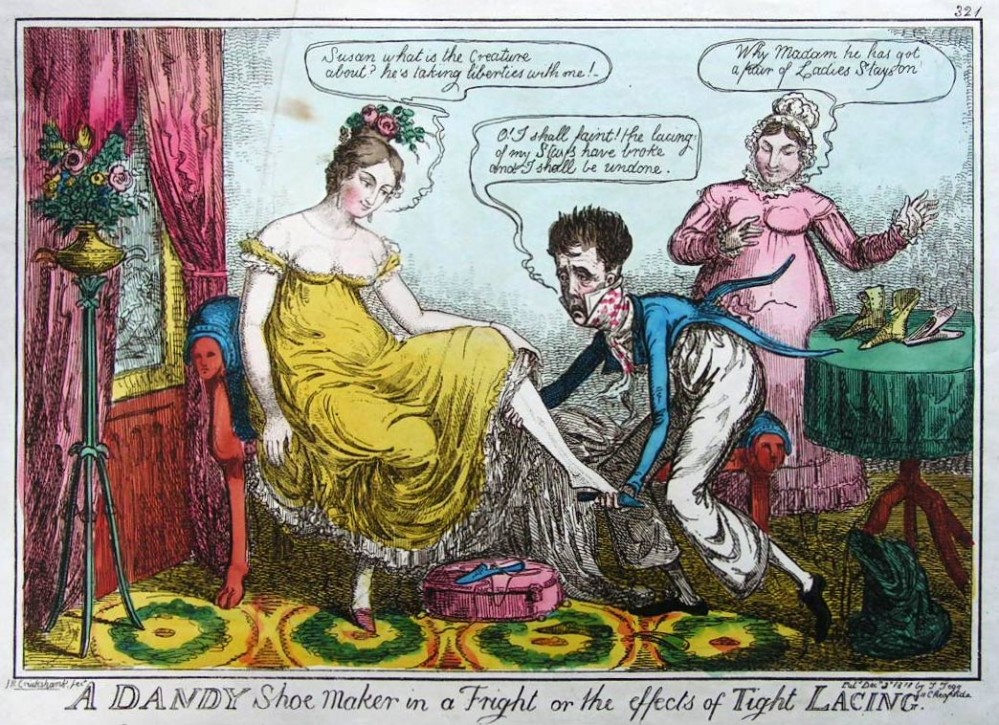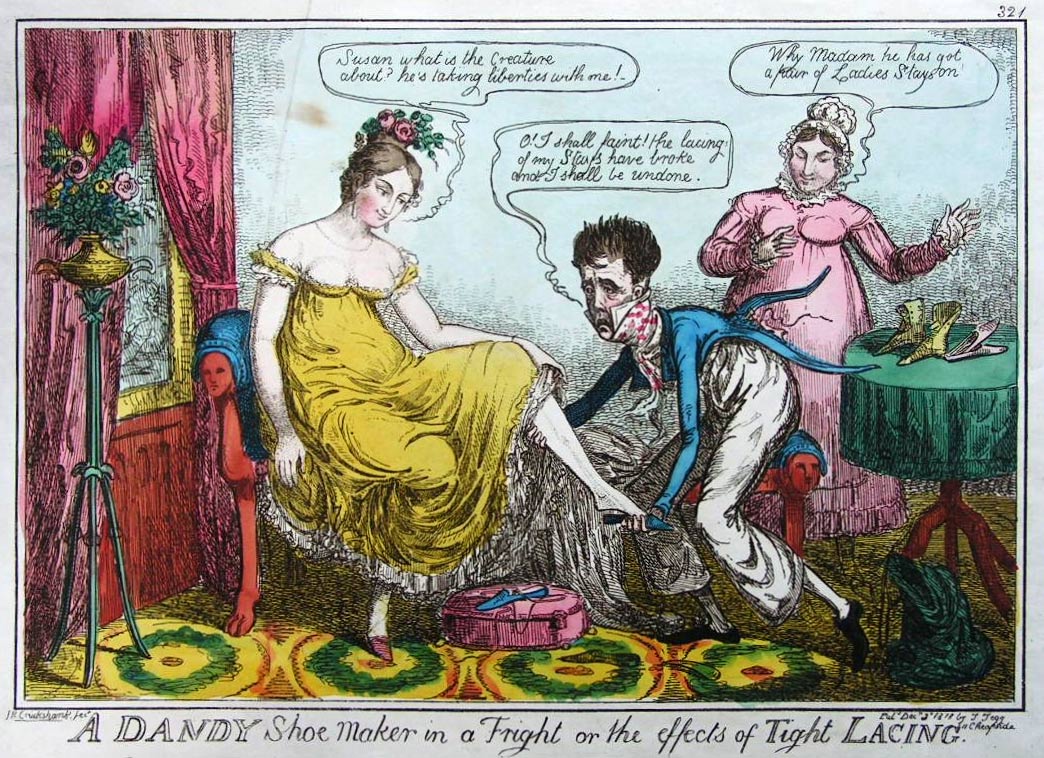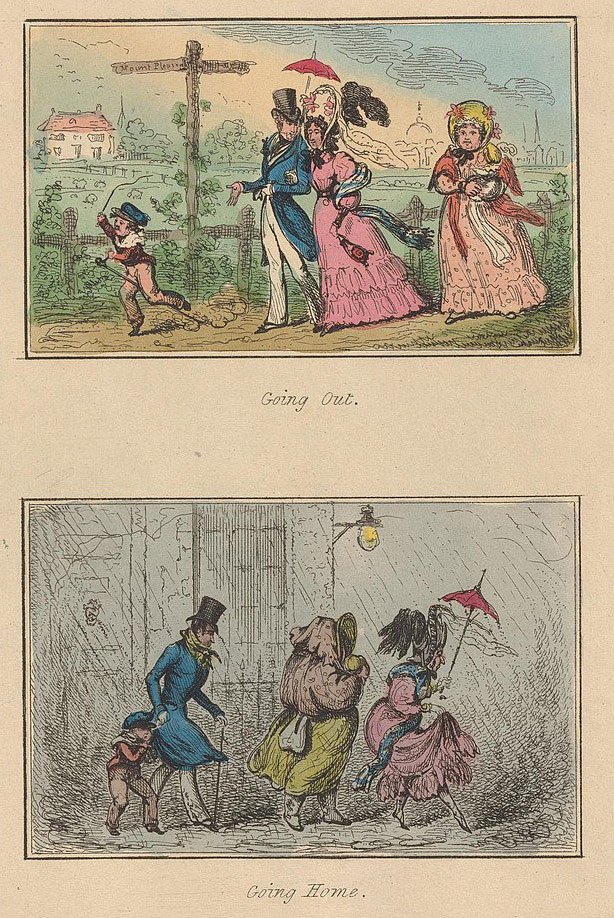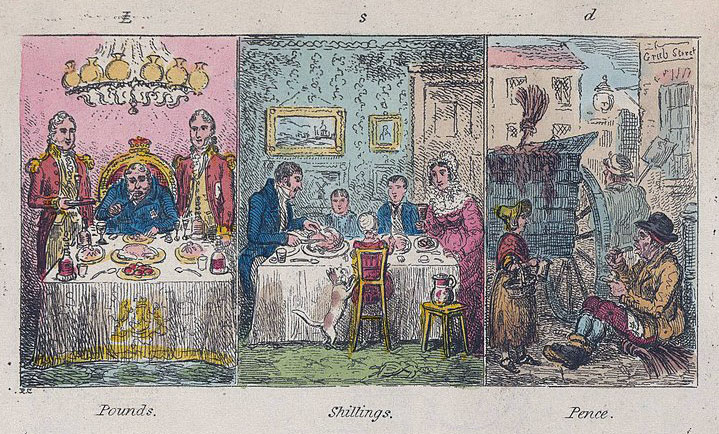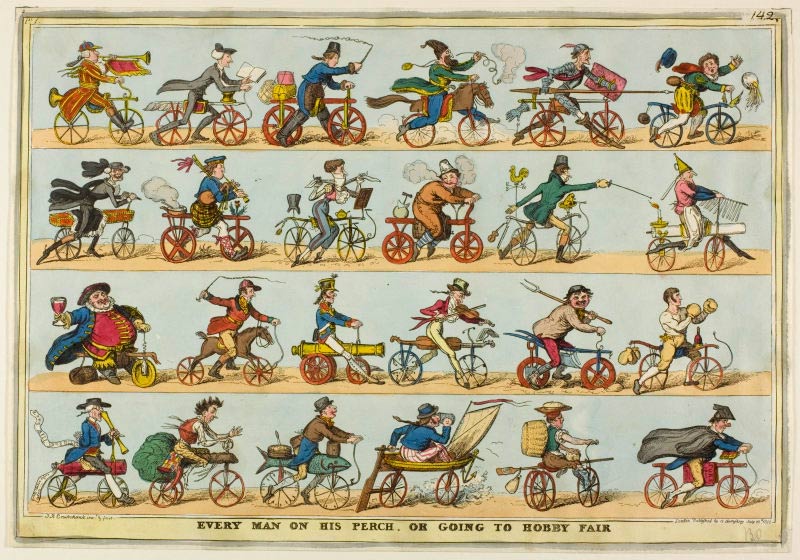'A Dandy Shoe Maker in a Fright or the effects of Tight Lacing' (1818). The cartoon pokes fun at dandies, who were often ridiculed as effeminate men who were obsessed with clothing and looking sharp. In the picture a dandy helps a woman with her shoes, but gets distraught when he notices one of his own laces is untied.
Isaac Robert Cruikshank was an early 19th-century British caricaturist and cartoonist. His cartoons show early use of speech balloons, caricature and slapstick, making him a prototypical comic artist. Some of his cartoons also present early examples of sequential narratives.
Life
Isaac Robert Cruikshank was born in 1789 in Middlesex, England, as son of caricaturist Isaac Cruikshank and brother of the more famous cartoonist George Cruikshank. He joined the military in 1803 and rose to the rank of sergeant. He sailed along with the East India Company as a midshipman, but while the ship sailed to the British prison colony of St. Helena, he was left behind there as a form of punishment. By the time he arrived back in his home country, most people already assumed he passed away. After his return, Cruikshank followed in his father's and brother's footsteps and started publishing cartoons as well. Several of his cartoon illustrations were sequels to books his brother had published earlier. In 1827, the siblings worked together on a series of illustrations named 'London Characters'. Isaac Robert Cruikshank died in 1856 from bronchitis.
'Going Out. Going Home' (1830).
Prototypical comics
Isaac Robert Cruikshank drew several one-panel cartoons using speech balloons. He also made a handful of sequential illustrations, most with text underneath the images. 'Every Man on his Perch, or Going to Hobby Fair' (1819) pokes fun at the then brand new invention of the bicycle, can be seen as an early example of sequential art. It depicts various people riding on primitive, handmade bicycles in four separate long strips. Another prototypical example of a comic strip can be found in 'The National Pop-Shop in Threadneedle Street' (1826). This cartoon is divided into two panels. The image on the left shows people putting up the sign of their store. The image on the right shows visitors swarming into the store afterwards. A three-panel sequence is 'Pounds, Shillings, Pence' (1830), in which Cruikshank contrasts the lifestyles of the upper, middle and lower class. Each panel informs the reader what monetary units these people use to afford the meals they are having. The upper class uses pounds and thus enjoys a lavish meal. The middle class has to rely on shillings, but can still afford a decent dinner. The lower class has to live on pences and therefore almost starves.
'Pounds. Shillings. Pence' (1830).
In 'Being Well Lather'd From A Dish or Tub/Hodge New Began With Grinning Pain to Grub' (1830), a man named Hodge is seen shaving in the presence of his wife in one panel, while in the next he offers his blunt razor to a stereotypical Jewish peddler. The same year, Cruikshank uses a character in a high hat and blue coat in a four-panel narrative. In 'Going Out, Going Home' (1830), the blue-costumed man goes out on a family trip to the countryside in the first panel, but in the next panel he and his relatives return home in soaking rain. More pastime misery befalls this unnamed protagonist in 'The Angler's Going Out. The Pleasures of Angling' (1830). He and a friend go out fishing, with high expectations. But in the next panel, they still haven't caught anything, much to their boredom and despair.


